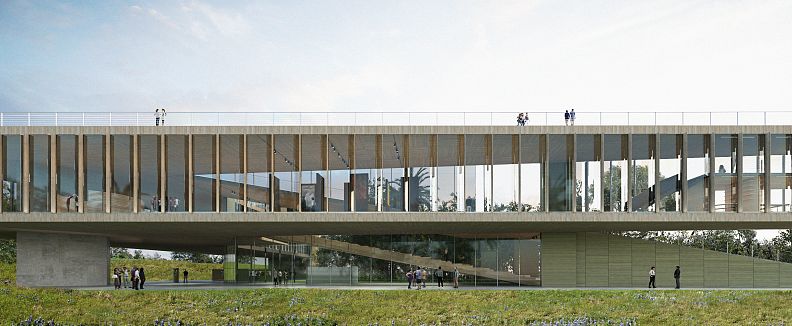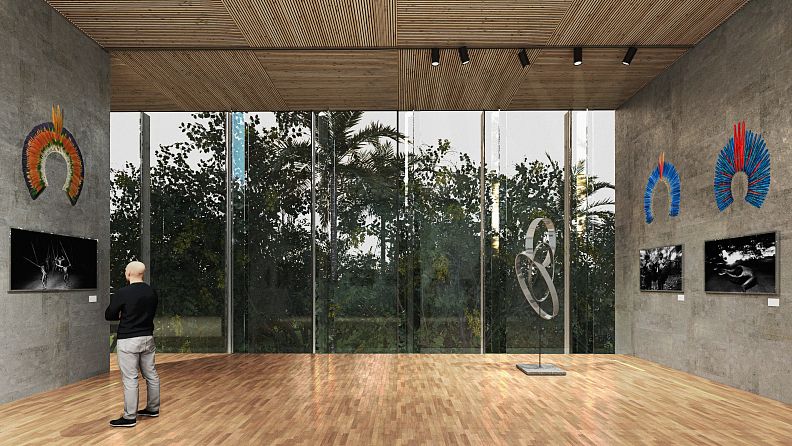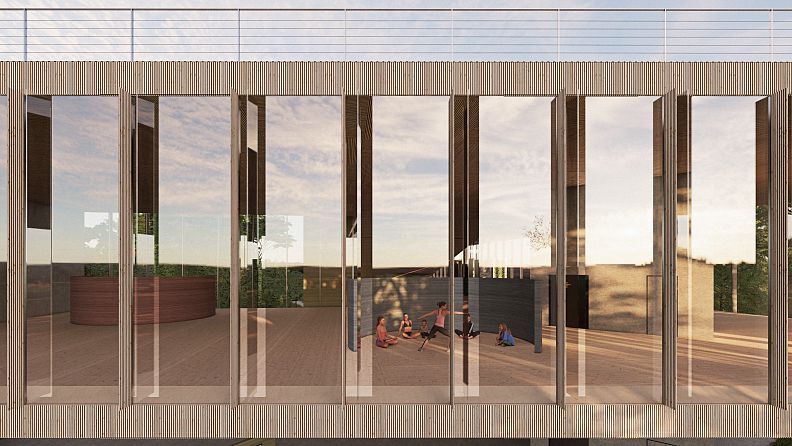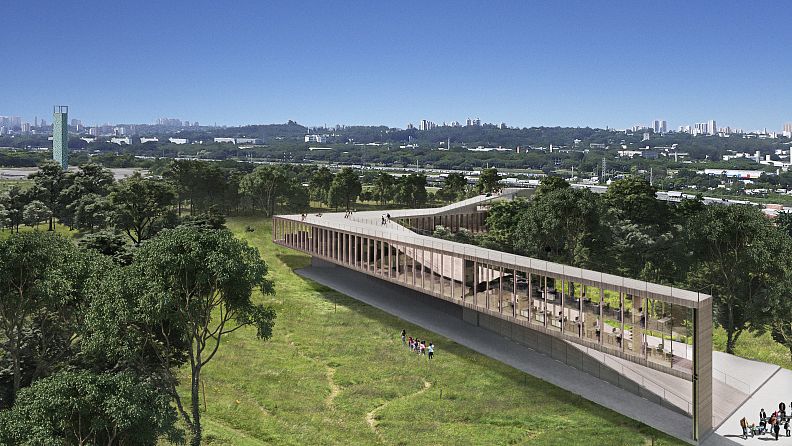Urban Oasis

Project idea
The Urban Oasis is a new cultural venue designed in order to provide more leisure and gathering spaces to the residents of São Paulo. Its layout is the result of a complex merge of indoor and outdoor activities. A exhibition center that also provides a permanently sheltered zone allowing several outdoor activities to be done indoors and vice-versa, without compromising the safety of its users thanks to several design strategies to allow maximum environmental performance with minimum use of resources.
Project description
A post-covid approach for a new cultural hub in São Paulo, Brazil. To be build in a former metropolitan logistics plot, the concept aims to safely bring back residents to cultural venues after long lasting lockdowns while restoring the balance of nature by revitalizing the area of the recently created Candido Portinari Park. In order to minimize its impact, the project foresees the use of ecological building methods and locally sourced materials. Also, regarding its biologically safety status, several bio-safe materials and systems will be applied to allow users to freely and safely occupy its indoor and outdoor spaces.
Technical information
Air-flow is key:
The whole complex is designed with systems that save energy while maintaining indoor temperature during brazilian summer and allowing constant air-flow year-round. Humidity sensors in strategic areas of the rooftop provides data to an eco-tech system that senses increase in wind speed and rain in advance and triggers the pivoting double layered-glass windows to be turned into a 10-15 degree angle, sufficient to maintain constant indoor air-flow while avoiding rain drops from getting into the exhibition and activity areas. In addition to that, there is also a water draining system placed between the raised floor and the windows, to assure no water droplets will ever reach the visitors.
Re-use for bigger flexibility:
3d-printed workshop pavilions will host most of the indoor activities. By reusing old building materials such as recycled concrete, the organic design allows indoor activity areas to change and evolve over time, providing flexibility of use and a carbon neutral footprint.
Technology to avoid viral transmission:
Most of the surfaces will be treated with Brazilian-tech materials based on the combination of nano-particles of Silver (Ag) and Copper (Cu) while the air conditioning systems located in enclosed areas will be fully filtered and purified with hydrogen peroxide (H2O2) aerated. Also, the only fully enclosed areas in the complex are restricted to staff only, and will feature positive air pressure, diminishing by 99% the chances of staff contamination. Also, the basic principle of this building is to gather external and internal activities and place them under a common roof, protected from rain and sun, but still open and with constant air-flow. By providing this macro cultural structure the design is capable of providing an unique area for safe social gathering during the post-pandemic times.
UV-lighting system:
All indoor lighting systems will feature a double lamp module, with one standard 9-12W stripe led for neutral and warm white lighting (3500 - 5000K) and a secondary parallel stripe with UV-lights to be used for sterilizing exhibition spaces during night and early morning after the scheduled visiting and working hours.








